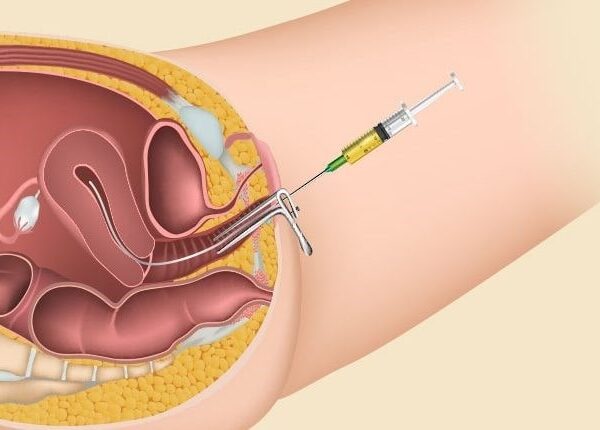The term cholecystitis is used to designate inflammation of the gallbladder wall. “In approximately 90-95% of cases, acute cholecystitis occurs due to an obstruction of the gallbladder outlet by a stone in the cystic duct, in the neck of the gallbladder or the gallbladder bag. Hartman”, explains Carlos Suárez, a specialist in the Digestive System of the Medical-Surgical Center for Digestive Diseases. In the remaining 5-10%, such inflammation occurs in the absence of gallstones (acalculous cholecystitis).
The prevalence of gallstones in countries such as the United States, Bolivia, Mexico, Spain, and Japan is approximately 10-15%, 15.7%, 14.3%, 9.7%, and 7%, respectively. “Between 16-25% of them will present some secondary complication such as acute cholecystitis, choledocholithiasis, acute pancreatitis, etc. Of these, acute cholecystitis is, by far, the most frequent.”
If acute inflammation resolves and recurrences occur, the gallbladder may become fibrotic and contracted, causing it to fail to concentrate bile and usually empty, qualities typical of chronic cholecystitis.
Acute cholecystitis is a life-threatening condition, and its early diagnosis and treatment are essential to reduce the rate of complications.
Causes
Considered risk factors for acute calculous cholecystitis include “Female sex (it is three times more frequent in women than in men); family history of gallstones in 1st-degree relatives, obesity, hyperlipidemia diets, history of resection of the terminal ileum, bariatric surgery (gastric bypass), medications (fibrates, oral contraceptives and ceftriaxone), and pregnancy.
In the case of acalculous cholecystitis, “it predominates in men in a critical state of health, elderly or sick, usually hospitalised in ICU (Intensive Surveillance Units)”. Associated risk factors include: “Pre-existing atherosclerosis, critical postoperative period, sepsis, total parenteral nutrition, multiple organ failure, polytrauma patients and extensive burns.”
Symptoms
It is estimated that up to 75% of patients with acute cholecystitis “have had previous attacks of biliary pain (right subcostal pain). When inflammation of the gallbladder wall (acute cholecystitis) arises, “pain in the right upper quadrant of the abdomen becomes much more intense and can often radiate to the rest of the abdomen, back, or ipsilateral scapula.” There is usually “nausea, vomiting, fever, and localised rebound tenderness in the gallbladder area .”
The pain caused by cholecystitis has the same characteristics and location as biliary colic but is more prolonged (more than 6 hours) and more severe. Within a few hours, Murphy’s sign (deep inspiration exacerbates pain on palpation of the right upper quadrant, which arrests inspiration) becomes evident, along with involuntary guarding of the upper abdominal muscles on the right side of the abdomen.
Acute cholecystitis begins to resolve within 2 to 3 days and completely resolves within a week in 85% of patients, even without treatment.
Prevention
90-95% of acute cholecystitis is associated with stones. Consequently, preventive measures should be aimed at avoiding this possibility. The risk factors linked to the formation of cholesterol stones, which are the vast majority, include: age, female sex, obesity, rapid weight loss, bariatric surgery, total parenteral nutrition, pregnancy, drugs (clofibrates, oral contraceptives, therapy estrogenic or with progestagen, ceftriaxone, octreotide), genetic predisposition, diseases of the terminal ileum, decreased HDL or increased triglycerides).
According to the Spanish Federation of the Digestive System, to prevent the appearance of stones, it is recommended:
If no symptoms have occurred, a regular and varied diet can be followed, although it is advisable not to eat a large amount (at one time) of foods containing fat (as excess fat can cause biliary colic ).
Foods that should be avoided are:
- Sausages, fatty meats (lamb, pork), whole milk, butter, margarine, cream, cream, flan, chocolate, cakes, eggs, olives, and pre-cooked meals.
Recommendations :
- Follow a healthy and varied diet.
- Avoid large meals. Eat little quantities and several times a day; the ideal is to distribute the meals in 5-6 shots (breakfast, mid-morning, lunch, snack, dinner and something before bed).
- Eat slowly and in a quiet environment. Chew well.
- Rest sitting up to half an hour after the main meals.
- Carry out simple cooking (boiled, in its juice, grill, steam, oven) and avoid fried, battered, breaded, sauces, stews and generally all those cooking with a lot of fat and oil.
For people who have gallstones, it is also advisable to:
- Avoid stimulating foods (coffee, cola, alcohol).
- Avoid foods that are not well tolerated repeatedly.
- Legumes can produce “gas”. To avoid this, change the cooking water once they have boiled for 10 minutes and pass them through a food mill to improve their digestion. If whole grains are not tolerated, replace them with refined ones.
- In case of obesity, try to lose weight; To do this, consult your doctor and nutritionist.
Well tolerated foods
The foods listed below are usually well-tolerated and do not produce significant biliary stimulation.
- Dairy: Milk and semi or skimmed derivatives. Fresh and low-fat cheeses.
- Cereals, legumes and potatoes: Potatoes, rice, semolina, pasta, bread, breakfast cereals, “Maria-type” biscuits, mashed and mashed legumes.
- Vegetables and vegetables: Cooked and without skin.
- Meat, fish and eggs: Lean meats (loin, pork or veal tenderloin), skinless poultry, rabbit, white fish, eggs, cooked ham, etc.
- Fruits: Fruits cooked in compote, canned, very ripe, without skin, non-acidic fruit juices.
- Sweets and pastries: Sugar, honey, seedless jam.
- Drinks: Water, infusions, fat-free broths, shakes made with skimmed milk or yoghurt.
- Oils and fats: Olive oil and sunflower oil in moderate amounts.
types
In general, two types of acute cholecystitis are recognised.
Calculous cholecystitis is the most common and occurs in 95% of cases due to obstruction of the gallbladder outflow tract by pre-existing stones.
There are variants of acute calculous cholecystitis, called emphysematous cholecystitis, “in which gas-forming microorganisms have secondarily infected the gallbladder wall and gas pockets are recognised in the gallbladder area on plain radiographs, ultrasound or TAC”, says Suárez.
There is also the variety called gangrenous, “where the inflammatory process ends with necrosis of the gallbladder wall and its perforation”. Finally, we find the term chronic cholecystitis “which in practice is used to designate non-functioning sclerotic and atrophic vesicles, recognised in various imaging studies, and which are considered the result of chronic or recurrent, frequently subclinical, vesicular inflammatory processes”.
Acalculous cholecystitis occurs in 5% of cases and usually occurs in critical patients hospitalised in Intensive Care Units (ICU).
Diagnosis
To detect that a patient has cholecystitis,” the blood count and blood chemistry will show an increase in the number of leukocytes with a predominance of neutrophils. There may also be a slight increase in the values of aminotransferases, alkaline phosphatases, bilirubin, amylase and lipase”, explains Suárez . Regarding imaging studies, “ultrasound is the most useful and, usually, sufficient to confirm the diagnosis, and other examinations such as CT (computerized tomography) of the abdomen and pelvis, cholangitis-magnetic resonance imaging, hepatobiliary scintigraphy or endoscopic retrograde cholangiography.
Treatments
In complicated acute calculous cholecystitis (emphysematous, gangrenous, perforated) and acute acalculous cholecystitis, the treatment is immediate cholecystectomy (removal of the gallbladder) since delay worsens the prognosis.
Regarding “uncomplicated” acute calculous cholecystitis, it usually resolves in 5-7 days. Studies report resolution without complications in up to 83% of cases, using antibiotics and NSAIDs, representing an alternative in unstable patients with high surgical risk. However, although the aforementioned conservative treatment exists, the definitive treatment is cholecystectomy, for which the laparoscopic approach is safe and effective.
As explained by Salvador Morales Conde, head of the General Surgery and Digestive System Service at the Quirónsalud Sagrado Corazón Hospital (Seville), “cholecystectomy is indicated in all cholelithiasis that has produced some symptom, no matter how mild it may be, since the possibilities of a short or medium term complication such as cholecystitis, cholangitis, choledocholithiasis or acute pancreatitis, are high”.
For its part, there are more doubts about asymptomatic cholelithiasis since “a percentage of them do not produce symptoms, and there are no clear and evident data that make us predict the cases that are going to develop symptoms or a complication.” Instead,” in patients with risk factors for developing more complex cases of cholecystitis (such as gangrenous cholecystitis), such as diabetic patients, cholecystectomy is recommended.”
Other data
As stated in the Acute document cholecystitis and its multiple faces in the image of the Virgen de la Concha Hospital in Zamora, the main complications of cholecystitis are:
- Gangrenous cholecystitis: It is an advanced form of acute cholecystitis and is accompanied by a considerable increase in morbidity and mortality due to the complications that may be associated, such as perforation of the wall and abscess formation, sometimes being a complicated preoperative diagnosis. It consists of the appearance of ischemia with the consequent wall necrosis due to increased intraluminal pressure.
- Emphysematous cholecystitis. It is a relatively rare form of acute cholecystitis characterised by gas in the gallbladder wall, lumen, or both, in the absence of fistulisation between the gallbladder and the digestive tract. It occurs more frequently in males and diabetic patients and is caused by gas-forming microorganisms ( Clostridium, Escherichia coli, Klebsiella ). This is a surgical emergency.
- Bilioenteric fistulae. In cases of chronic perforation, lienteric fistulas are produced, allowing the passage of stones through the fistula. These may be asymptomatic and not obstruct if they are small in size. Cholecystoduodenal fistula is the most frequent.





